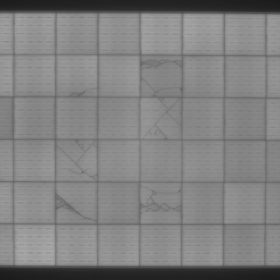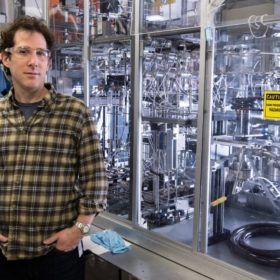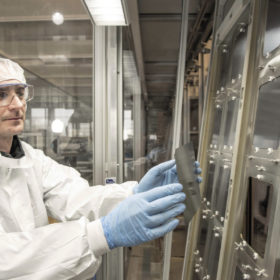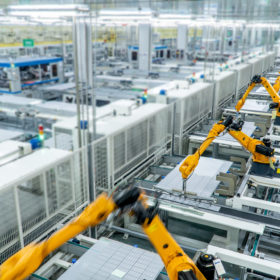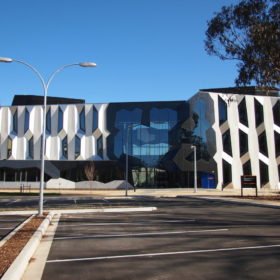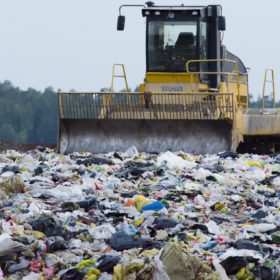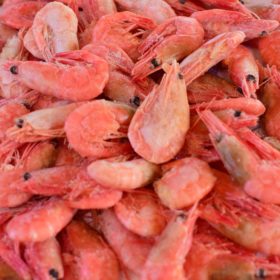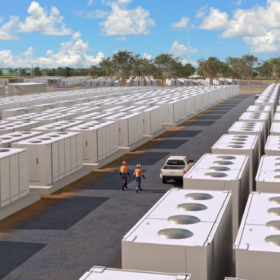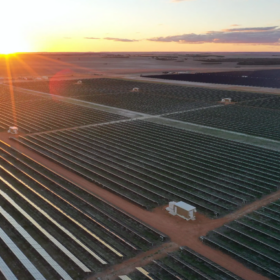Looking into the cracks
A white paper published earlier in December by PV Evolution Labs investigates the formation of performance damaging cracks in PV cells, based on mechanical stress testing of more than 40 commercially available PV modules. While the lab warns that susceptibility to cracking will change according to the specific bill of materials making up each module, certain technologies are shown to perform better than others.
New approach to III-V tandems sets 32.9% efficiency record
A collaboration between the U.S. National Renewable Energy Laboratory and the UNSW has yielded a new efficiency record of 32.9% for a tandem cell device utilizing III-V materials. Key to the achievement was a new technique enabling the researchers to take advantage of “quantum wells” in the material that serve to trap charges and enable tuning of the cell bandgap to absorb more of the light spectrum.
Oxford PV retakes tandem cell efficiency record
Perovskite developer Oxford PV has set a new world record for perovskite-silicon tandem cell efficiency at 29.52%, edging out the previous record set less than a year ago by Helmholtz Zentrum Berlin. The new record has been certified by the U.S. National Renewable Energy Laboratory.
Carbon nanotube gives batteries a boost
Scientists in the U.S. examined the use of different conductive filler materials in a lithium-ion battery electrode, finding that adding single walled carbon nanotubes to a nickel-cobalt-manganese cathode resulted in better electrical conductivity and higher rate capability for the overall battery. The results, according to the group, could provide new insights into design of high power, high energy battery electrodes.
Terawatt scale by 2050
In a new paper published in the journal of Renewable and Sustainable Energy, renowned PV scientist Pierre Verlinden examines the solar industry’s trajectory towards the 70 TW of installed capacity that will be needed by 2050, as the best choice for meeting climate targets set out in the 2015 Paris agreement. Silver consumption and recycling, according to Verlinden, will be the biggest challenges in the years to come, as well as ensuring balanced growth and avoiding a major installation rush in the years close to 2050.
Weekend read: Singapore solar walks the talk
Earlier this year, Singapore surpassed its 2020 target for 350 MW of installed PV, and has set itself a more ambitious goal of 2 GW for the coming decade. pv magazine recently spoke with Thomas Reindl, deputy CEO of the Solar Energy Research Institute of Singapore (SERIS) – and also the lead author of a 2020 update to the institute’s PV Roadmap for Singapore report – to catch up on the latest developments in the city-state’s PV market.
Heating up the heterojunction-LID discussion
Scientists led by the University of New South Wales have looked into the long-term degradation of silicon-heterojunction. Their findings suggest that illumination at high temperatures could actually improve cell efficiency, but also risks activating multiple light-induced degradation mechanisms if not carefully controlled.
Degradation and regeneration in polysilicon passivation layers
Scientists in Australia took a close look at the long-term performance of passivation layers in silicon solar cells, and discovered a surprising process of degradation and regeneration at work within the material. The results could have implications on the processes used in industrial scale solar cell production.
Understanding the fate of end-of-life modules
Scientists in India have taken a close look at the potential impact of growing volumes of PV waste, and have conducted surveys that suggest a lot more work is needed from manufacturers and policymakers to develop management systems for end-of-life PV products.
Throw another prawn on the battery
Scientists led by MIT have suggested chitin, a carbon and nitrogen-rich material made from waste shrimp shells, could produce sustainable electrodes for vanadium redox flow batteries and other energy storage technologies.

